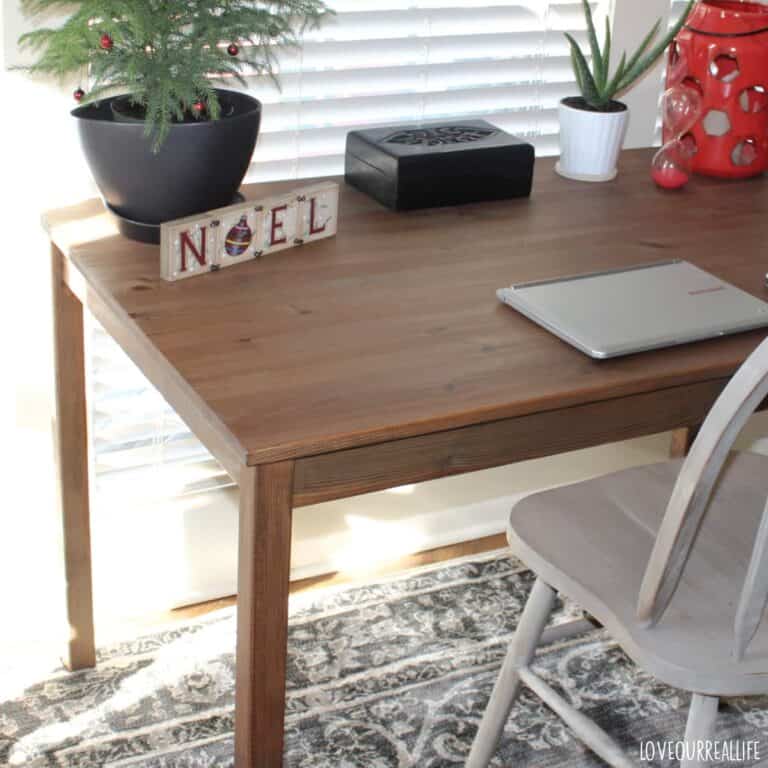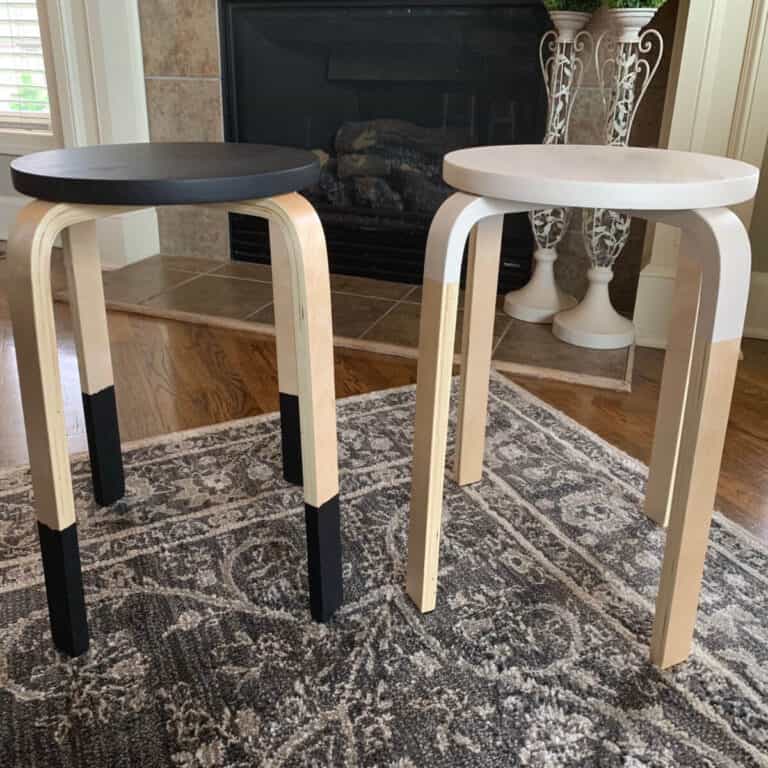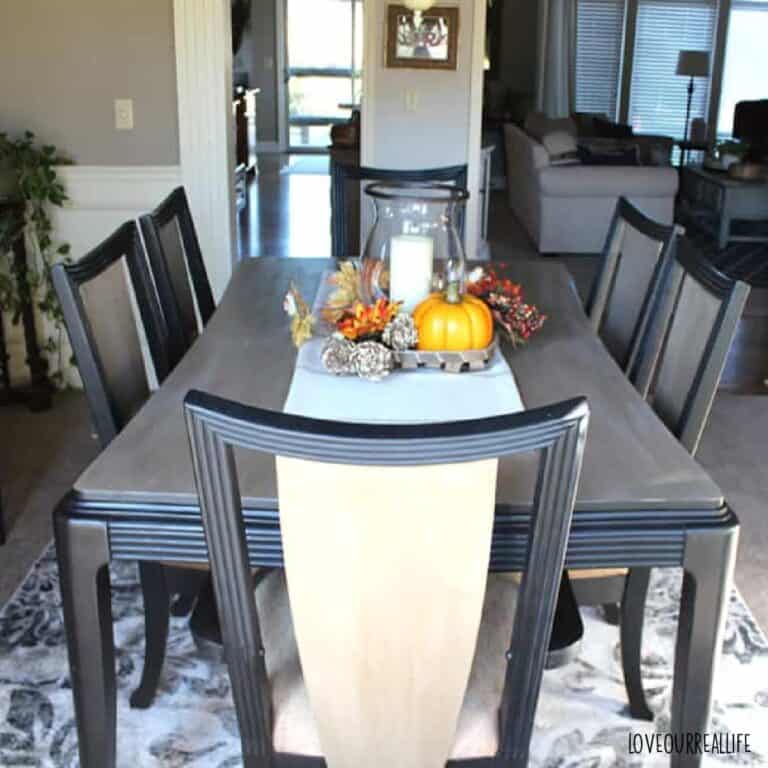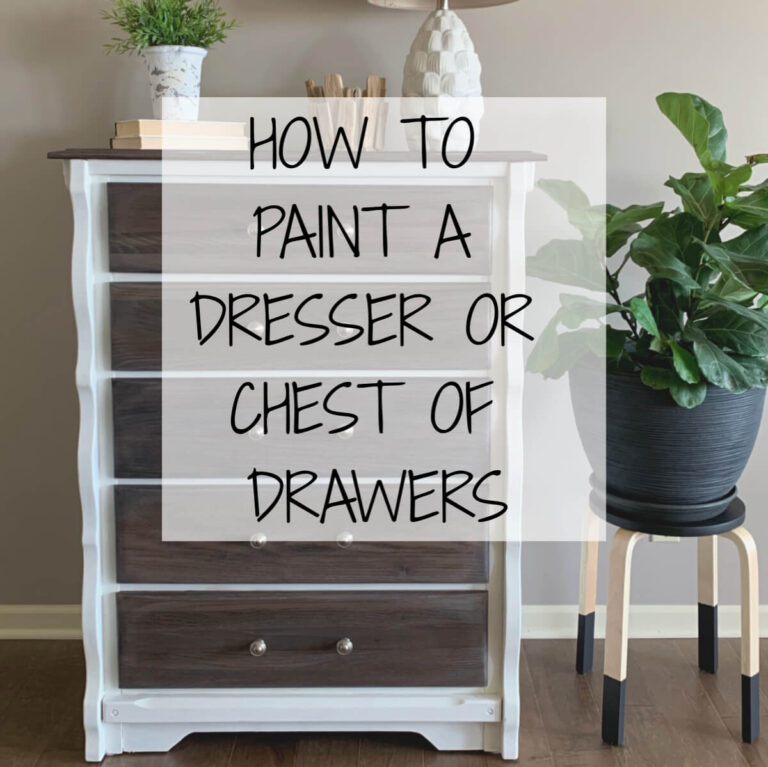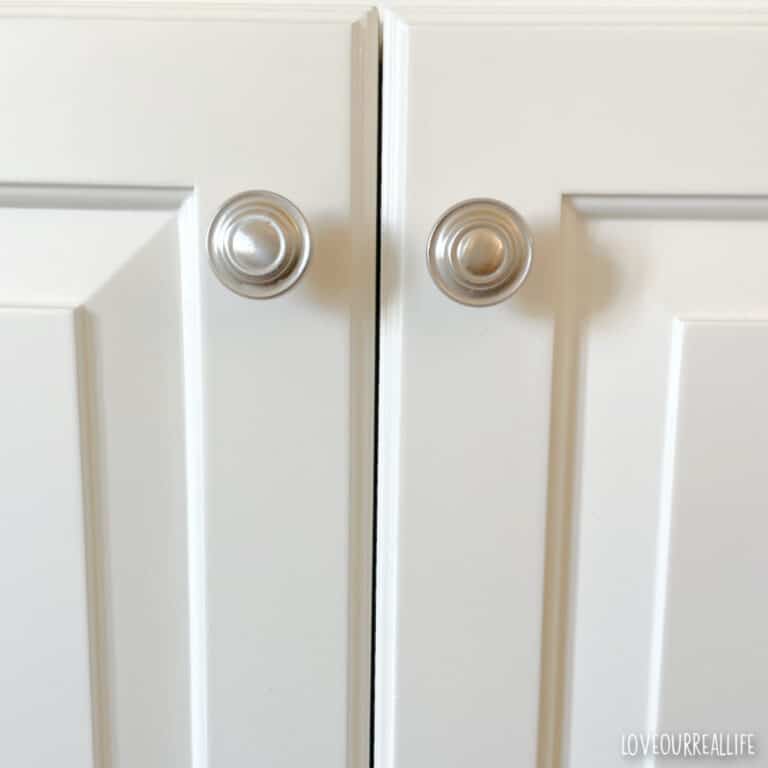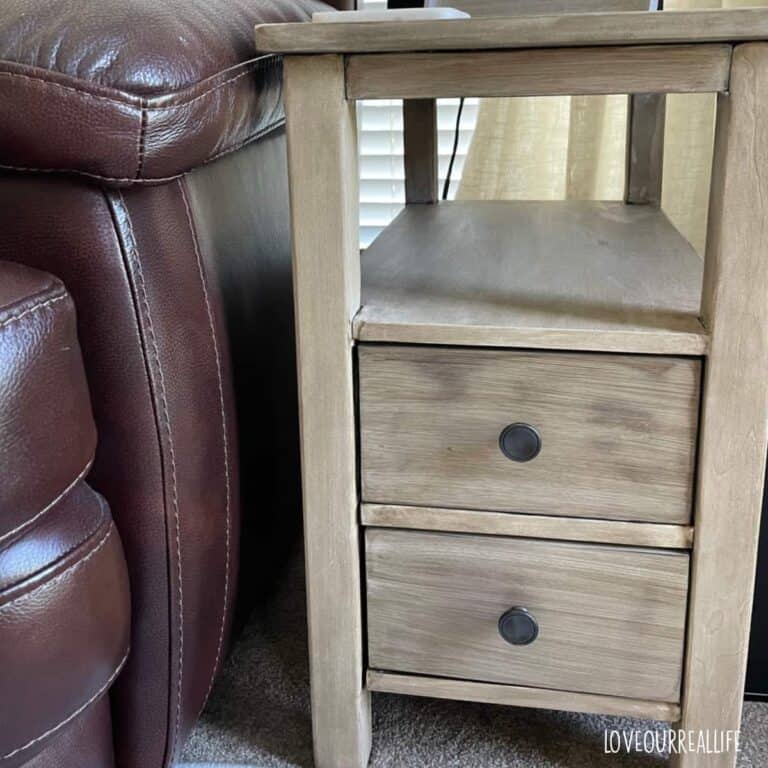How to Bleach Wood Furniture- Make It Look New Again
Learn how to brighten up a piece of furniture with a little bleach — and see it shine. Bleached wood has become quite popular so it’s definitely a technique you will want to learn more about.
To bleach wood, you will need to select the appropriate type of bleach for your specific wood furniture project. Always take proper care to wear protective equipment before using bleaching chemicals.

Get more ideas for furniture makeovers here.
When working with bleach products ensure proper ventilation, and wear gloves, clothing that protects your skin, eye goggles, an apron, and a mask.
Also be sure to read the directions on each bleaching product thoroughly and follow any other recommendations suggested.
What Does Bleach Do to Wood?
Using bleach on wood will generally lighten the color of the wood. Bleach can also help remove stains on wood as well as even out wood tones and discoloration.
But keep in mind that not every type of bleach will have the same effect when working with wood. Bleached wood is typically achieved in one of three ways:
- Regular laundry bleach / chlorine bleach
- Two-part bleach
- Oxalic acid
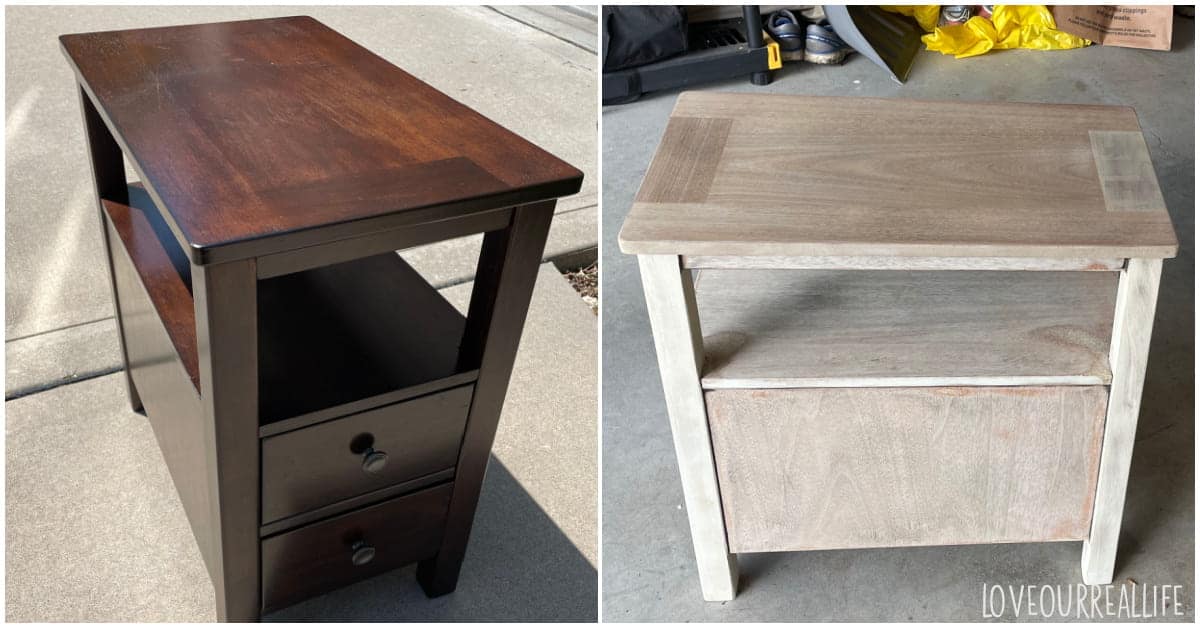
In the above picture, I started with a dark brown stained table and sanded it down to bare wood. Then I used the two-part bleach (Zinsser Wood Bleach) to lighten and brighten the wood further.
It worked very well. However, much of the table was made with wood veneer, and I over-sanded a bit around the edges which made it not very uniform. It was a cheap old table with lots of scratches, so I wasn’t overly upset.
I ended up using a white wash, then going over that with an antiquing glaze to pull it all together. It turned out really pretty.
RELATED: 25+ Painted Furniture Ideas- Before and Afters
Clorox or Other Household Bleach
Typical household bleach is chlorine bleach. This type of bleach contains sodium hypochlorite. Laundry bleach is helpful in removing stains and even dyes on wood.
However, I have found it doesn’t do a great job of actually lightening the color of wood.
To use chlorine bleach on wood: after stripping the wood completely and cleaning, Clorox bleach can be applied using a brush or simply wipe on with a rag.
Placing wood in the sun will help with the bleaching process.
Apply more coats as warranted, allowing time to dry between coats. After bleach has dried completely, neutralize with a mix of 1:1 white vinegar and water. When that has dried, lightly sand the furniture with fine grit sandpaper.
Two-Part Bleach Such as Zinsser Wood Bleach
When bleaching wood furniture, Zinsser Wood Bleach is my preference because it is actually effective in lightening the wood.
Two-part bleach products have two solutions you will need to apply (a two-part process) to the wood. Wood should be sanded free of stain or it can be applied to new wood.

Solution A contains Sodium Hydroxide (caustic soda or lye). Solution B contains Hydrogen Peroxide.
For two-part bleach such as Zinsser Wood Bleach, you will need to apply solution A with a new sponge, saturating wood completely.
Let Solution A sit 5 minutes for soft woods and 10 minutes for hard woods.
Examples of softwood: Pine, redwood, cedar
Examples of hardwoods: Oak, maple, walnut, cherry, birch, poplar, beech, ash, mahogany.
Use a different sponge to apply Solution B of the bleach mixture over Solution A while the surface of the wood is still wet.
Let the furniture sit overnight. Apply multiple coats as needed to get the desired bleach effect.
If using more than one application of solution A and B you will need to neutralize the wood with 50-50 vinegar and water solution. Let dry completely, then sand with fine-grit sandpaper. Remove any dust from sanding with lint free cloth prior to using sealer.
Oxalic Acid
Oxalic acid is often used to remove rust and water stains from wood.
Full disclosure, I have never used oxalic acid as a wood bleach. Everything I have read makes me a bit leery to try it. Oxalic acid is quite toxic from what I have read, but it is helpful in bleaching to wood’s natural color.
Oxalic acid comes in powder or dry crystals and is mixed with hot water, applied to bare wood.
How to Bleach Wood Furniture
We’ve walked through the basics of bleaching wood when discussing the different processes of bleaching. Regardless of the type of bleaching that is use, there are certain steps you will take. Let’s recap.
Remove Old Stain or Paint
Strip current top coat to get to bare wood. This can be done with a stripping product such as Citristrip or by using a sander.
Be aware that if you are removing old paint, you could be dealing with lead. If this the case protect yourself by using a dust mask and follow all precautions before you start to scrape away the existing finish.

Frankly, I always wear a N95 mask when sanding as I try to avoid breathing in any of the dust particles. Also be sure to work in a ventilated area. Outdoors is best.
When sanding, be sure to go with the wood grain. If you are using Citristrip, a plastic putty knife is helpful in removing the finish without damaging the wood grain.
Clean the Furniture
If there is a lot of dust from sanding, you might consider vacuuming the furniture to remove the majority of the dust/debris.
Then, use mineral spirits or even just water on a clean rag to thoroughly clean the piece. Allow to thoroughly dry prior to initiating the bleaching process.
I waited 24 hours and that appeared to be an adequate drying time.
Apply Bleach
Follow the suggestions above for whichever bleaching process you select:
- household bleach
- two-part bleach
- oxalic acid
As I stated, if your intent is to truly lighten and brighten the wood, I would suggest two-part bleach such as Zinsser Wood Bleach.
Regardless of the type of bleaching you select, ensure you clean up any bleach spills or you run the risk of uneven bleaching.
I wasn’t as careful as I should have been on this table and you can see how blotchy it is where I didn’t get both solutions on as recommended.

Allow to fully dry.
Lightly Sand
Using a fine-grit sandpaper, lightly sand the surface. If using the two-part bleach, you will note a salt-like residue. Hand sanding can take care of this for a nice, smooth surface.

Neutralize
Use a mixture of 1:1 vinegar to water to neutralize the wood. Wipe on evenly with a clean rag.
Allow 1-2 days to fully dry before next step.
Apply Stain or Top Coat
You may wish to apply a stain at this point or leave it as a pretty, bleached wood. Either way, you will likely use a sealer if the furniture gets much traffic.
If you are looking for a good top coat, consider Varathane Polyurethane for a durable sealer or General Finishes Flat Out Flat.
How long does it take bleach to lighten wood?
The length of time it takes bleach to lighten wood will vary. With soft woods, you will notice a faster change, possibly within minutes. Hard woods could take longer, as in hours.
I suggest letting the wood furniture sit overnight to get the full effect of the bleaching process. Then, repeat as needed for further lightening.
How do I make wood look bleached?
Of course bleaching is the best way to make wood look truly bleached. But, you can achieve a DIY bleached look by painting the wood in an off-white color then applying an antiquing glaze.

I have done this as well with great results! Although I love the look of bleached wood on vintage pieces, the diy bleached look achieved by paint is a lot easier!
Another process I’ve used for giving furniture the effect of bleaching is by completing a white-wash. These tv trays turned out great!
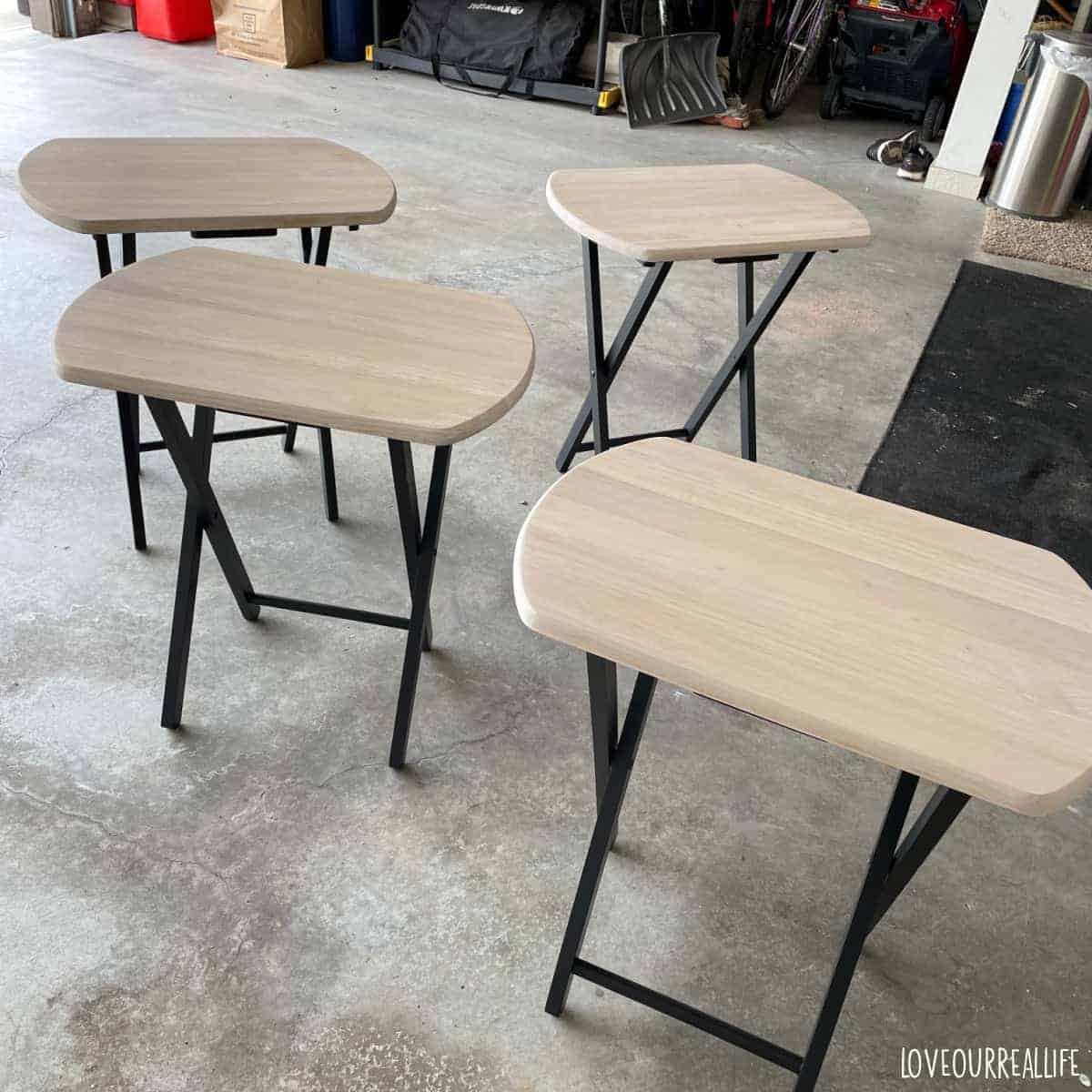
Other Furniture Makeover Posts
- How To Remove Chalk Paint from Wood Furniture (3 Ways)
- What Is Chalk Paint for Furniture and How to Use It
- How To Seal Chalk Paint Furniture (3 Top Ways)
- How To Apply Chalk Paint Wax: Tips to Use
- How Long Does It Take Chalk Paint To Dry and Cure for Use?
How to Bleach Wood Furniture- 3 Ways

Bleaching wood furniture is a great way to lighten and brighten an old, outdated piece.
Materials
- Wood bleach (I prefer Zinsser Wood Bleach)
- Clean rags
- Vinegar
- Water
Tools
- Hand Sander or Citristrip
- Medium and fine-grit sandpaper
Instructions
- Select type of bleach product you prefer for your wood furniture. The three main types are:
• regular laundry bleach/chlorine bleach such as Clorox
• Two-part wood bleach such as Zinsser Wood Bleach (my preference)
• Oxalic Acid - Remove Stain or old paint. Using a hand sander or stripper such as Citristrip, remove all stain or paint to get wood down to bare wood.
- Clean wood. Vacuum away any dust left behind after sanding or stripping. Using mineral spirits or just damp rag, clean wood and allow to thoroughly dry.
- Apply Bleach. Use wood bleach according to directions on labels. Allow 24 hours to dry.
- Lightly sand. Use a sanding pad to remove any of the residue left behind from the bleaching process.
- Neutralize the wood. Use a solution of 1:1 vinegar to water to neutralize the wood piece. Apply with a clean rag. Allow to fully dry.
- Apply stain if desired as well as top coat.
Notes
Only complete wood bleaching in well ventilated area. Use proper protective gear such as dust mask, apron, eye goggles, etc. Follow all precautions on products labels to ensure safe use.
